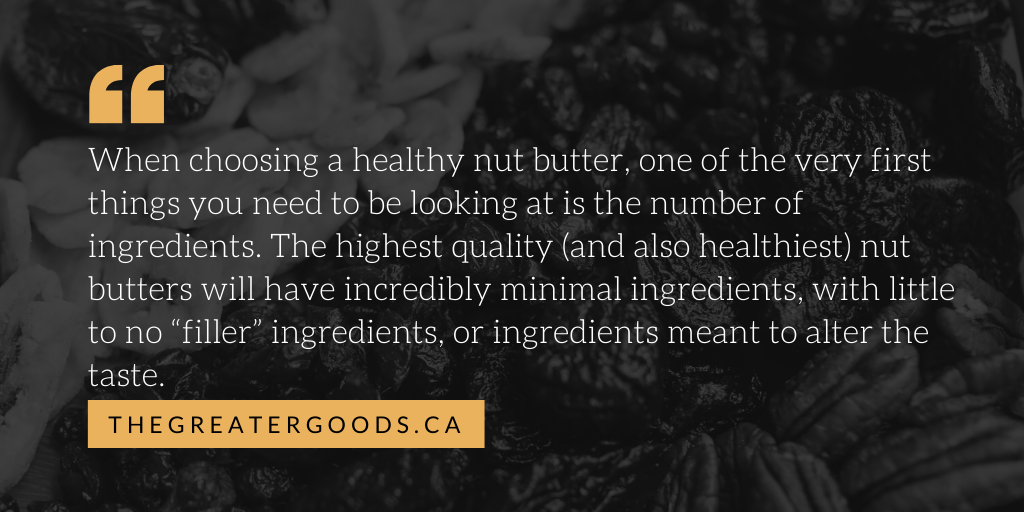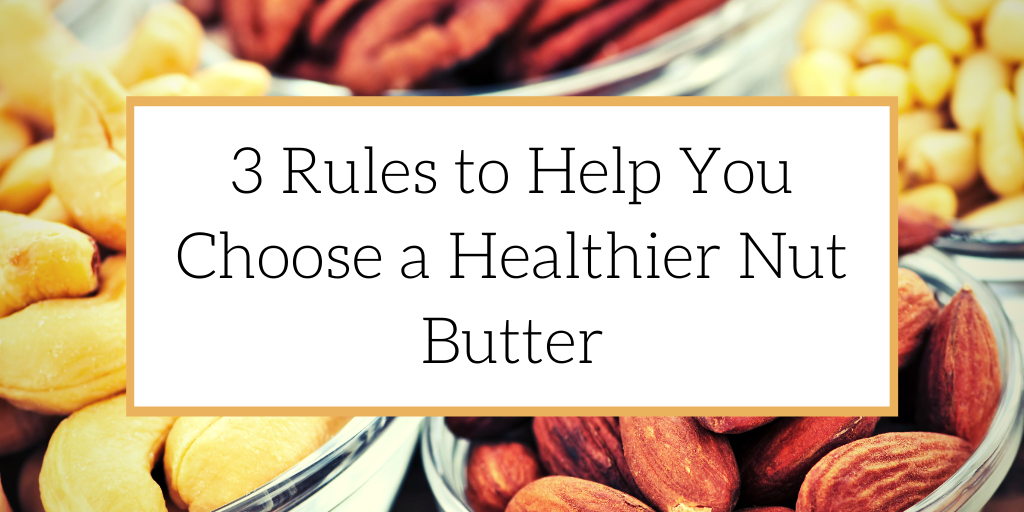Whether you’re trying to pick a nut butter at your local grocery store, or you’re in the food industry and you’re looking for the healthiest options to sell or use, you certainly have a plethora of options. Choosing the healthiest nut butter can be a bit confusing – after all, how are you supposed to know which nut is healthiest? Choosing the healthiest nut butter goes beyond the type of nut it contains, and also depends on other factors like number of ingredients and unnecessary additives. In this article, we take a look at 3 rules to help you choose a healthier nut butter, so you can know what you’re searching for ahead of time.
Number of Ingredients

When choosing a healthy nut butter, one of the very first things you need to be looking at is the number of ingredients. The highest quality (and also healthiest) nut butters will have incredibly minimal ingredients, with little to no “filler” ingredients, or ingredients meant to alter the taste.
Bonnie Taub-Dix, R.D.N., author of Read It Before You Eat It: Taking You from Label to Table explains why the nutrition label should be a simple read on Aaptiv.com:
“According to Taub-Dix, the first order of business should be to study the nutrition label. “First and foremost is that the ingredients contain the nut … I try to choose nut butters that don’t have a lot of other things added that would be ingredients you wouldn’t necessarily want—like salt and sugar,” she explains. Ideally, if you choose an almond butter, the one and only ingredient should be almonds.”
Macro and Micronutrient Profile
If you’re choosing a nut butter partly or even primarily for the health benefits, taking a look at the macro and micronutrient profile is a great way to quickly find out which is best for you. Of course, choosing a nut butter based on their nutrient profile can require more flexibility in both budget and taste.
Amy Lorraine Nutrition tells us why in some cases, you should heavily consider the macro and micronutrient profile of your nut butters:
“If you’re lucky enough not to have an allergy or intolerance to any nuts or seeds and don’t mind shelling out a few more bucks for a different kind of nut butter than peanut, then you can start evaluating the nutrient profile of various nuts. Are you wanting to use your nut butter primarily as an additional source of protein? A good source of healthy fats? A boost to your calcium intake?”
Avoid Butters With Added Sugar
Although added sugar will of course sweeten the taste of a nut butter that may naturally taste a little bitter, avoiding added sugar is key if your goal is to search for the healthiest nut butter. Having said this, making the switch to a healthier nut butter with just a little bit of the right kind of added sugar can certainly still allow you to reap its health benefits.
Heather McClees of One Green Planet explains why you should refrain from added sugars in your nut butter if you can avoid it:
“Added sugars found in nut butters include: sugar, brown sugar, molasses, honey, coconut sugar, coconut syrup, evaporated cane juice, evaporated cane syrup, cane juice, cane syrup, dextrose, maple syrup, agave, brown rice syrup, and tapioca syrup. Even though some of these may pose less damage than others, keep in mind that they are all added calories that provide little nutrition. It’s also important to remember that when you eat sugary and fatty foods at the same time, it can alter your body’s ability to use insulin efficiently. This can lead to blood sugar problems and possible weight gain.”
Here at The Greater Goods, we offer consultation services for your business, from food production to distribution. If you’re looking for advice on how to get up and running, we offer a free consultation with our expert food industry consultants and food brokers.
